#marie d'anjou
Text
About Marie d'Anjou
After losing four children between 1436 and 1439, Marie began to dress all in black. She was devoted to her household, her religious duties and her children. She was admired for her piety, leading a devotional life. Marie appears to have had no chancellor in her household as her seal was kept by one of her ladies-in-waiting, perhaps in an effort to keep her household out of internecine politics at court. She normally resided at Tours or Amboise and did not usually travel with the court.
Marie kept a large menagerie of pets including starlings, parrots, a wild goat, stags and does, in addition to her greyhounds. She also received a porpoise as a gift. Perhaps this is where her son Louis learned to love such exotic pets. Marie was an expert needlewoman. Her account books for the years 1454 and 1455 attest she embroidered every day with gold thread from Cyprus, Genoa and Venice with a cushion stuffed with bulrush and patterns on canvas from Cambrai.
Marie had a musical chapel with fifteen members. Two of these chaplains were composers of polyphonic music. Marie was the first queen to officially have an astrologer in her household according to the account books of 1450. His name was Arnoul de La Palu and he was regularly paid by the queen until Arnoul left to go into the king's service. He was quickly replaced by Jehan de Lormont.
Marie remained very close to her family and frequently kept in touch with her brother René, Duke of Lorraine. René visited her and she borrowed his boats to sail up the Vienne and Loire Rivers for visits. A list of New Year's gifts for 1455 for the most part included gifts to her brothers and sister-in-law Joan of Laval. Marie and the king made a pilgrimage together to Le Puy in 1424. In 1447, Marie made a pilgrimage on her own to Mont St. Michel.
Susan Abernethy - Marie of Anjou, Queen of France
#xv#susan abernethy#marie of anjou queen of france#marie d'anjou#queens of france#louis xi#le roi rené#jeanne de laval
25 notes
·
View notes
Text
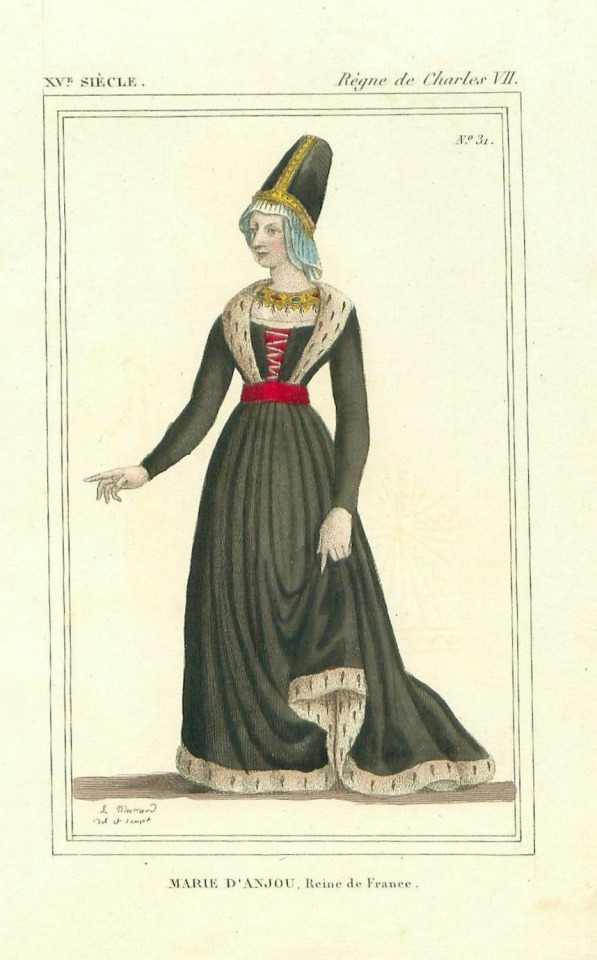
Marie of Anjou, Queen of France.
She is cited by the historian Louis-François de Villeneuve-Bargemon as "a model of wives and queens, a heroic woman, a mother of the poor and unfortunate".
#royaume de france#maison de valois#marie d'anjou#reine de france#vive la reine#full length portrait#maison d'anjou#full-length portrait
4 notes
·
View notes
Photo

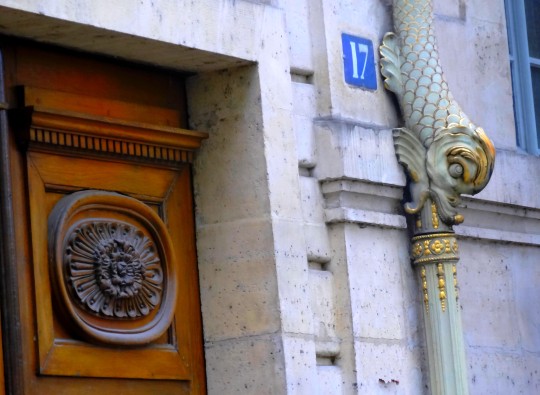
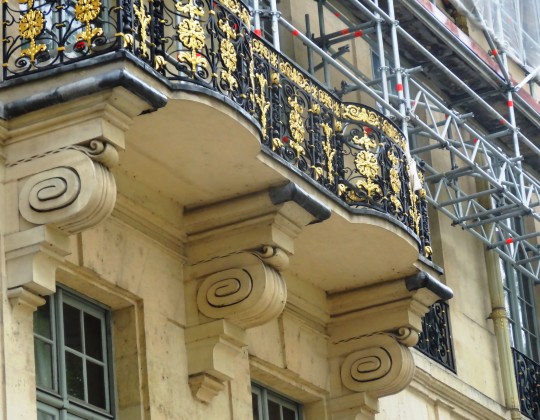
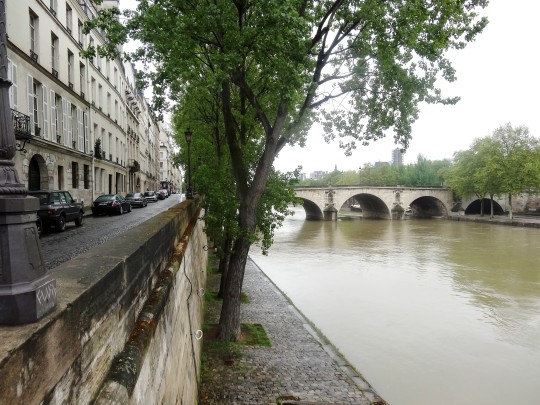
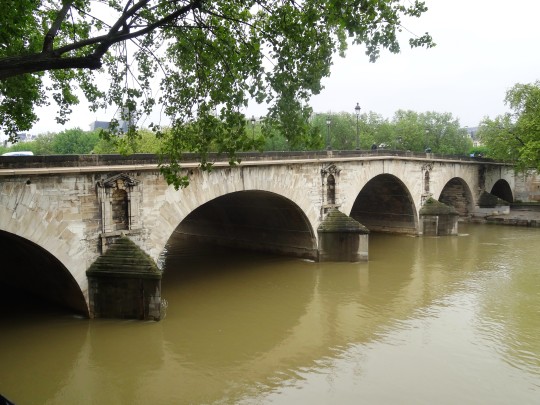
Retour à mon projet de présenter la plupart de mes 53880 photos (nouveau compte approximatif !)
2013. Une journée à Paris. Le Quai d’Anjou, sur l’Île Saint-Louis, avec sur la dernière, le Pont Marie.
4 notes
·
View notes
Text
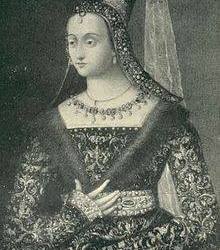
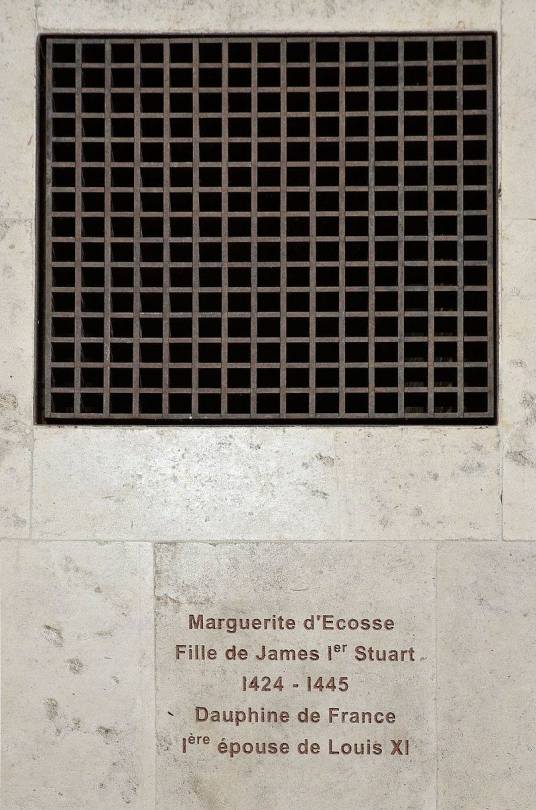

On 16th August 1445, Margaret Stewart, daughter of James I and Lady Joan Beaufort, died in Châlons.
Margaret had married Louis XI son of Charles VII and Maria d'Anjou on 24 June 1436 in Tours Cathedral. As you would expect this marriage had more the Auld Alliance than any love story,.
Margaret sailed for France in March 1436, and she was escorted by some of the greatest Scottish nobles. She entered Poitiers, where a child dressed as an angel crowned her with a wreath of flowers. She was just a child herself, aged only 11, he husband, Louis in Tours was 13, they wed on 25 June 1436 and she became the Dauphine of France. The marriage of course was not consummated right away and she was taken into the household of the French Queen, Marie of Anjou, where she reportedly saw very little of her husband, whose aversion of her was remarked upon by contemporaries.
She is said to have devoted much of her time to writing, and she was criticised by doctors for it, who claimed that her “poetic overwork” may have attributed to her death. Unfortunately, none of her works survive to this day. Reportedly, Louis ordered that all her papers be destroyed.
She was treated with kindness by King Charles VII and his wife, and when she died on 16 August 1445, there was a great outpouring of grief. Her two sisters, Eleanor and Joan, were on their way to France at the invitation of Marie of Anjou, but they arrived just a few days after Margaret’s death.
An unidentified Scot wrote of Margaret,
"Alas that I should have to write what I sadly relate about her death…I wrote write this saw her every day, for the space of nine years, alive and enjoying herself in the company of the King and Queen of France. But then…I saw her, within the space of eight days, first in good health and then dead and disembowelled and laid in a tomb at the corner of the high altar, in the cathedral church of Châlons."
She is buried in Saint-Laon church in the French department of Deux-Sèvres, a canopy over her tomb is all that remains after the destruction during the French Revolution, a modern floor plaque and grill have been added her coffin can be seen though the grill.
There is a lot more history to read about the marriage and her life here from the excellent Freelance History Writer https://thefreelancehistorywriter.com/.../margaret...
12 notes
·
View notes
Text

La tarasque est un monstre hybride qui vit sur les berges du Rhône. C'est à Tarascon que l'histoire autour du monstre s'est écrite. "C'est une légende inventée pour transmettre un message à la population. Il faut se méfier du Rhône qui peut déborder, faire chavirer les bateaux, inonder, les enfants peuvent se noyer. La tarasque incarne les dangers du fleuve. Ce sont des mythes qui se retrouvent dans toutes les cultures" nous dit Aurélie Samson, directrice du museon Arlaten.
Sainte-Marthe la victorieuse
Selon la tradition chrétienne, l’histoire commence lorsque Marthe, sœur de Marie Madeleine, arrive de Palestine au cours du 1er siècle pour évangéliser la région. En remontant le Rhône, elle s’arrête à Tarascon et y trouve des villageois terrorisés : un monstre hante les bords du fleuve. Ce dragon amphibie à six pattes, couvert d’une carapace de tortue hérissée de piquants et armé de griffes et de dents, dévore bêtes et gens. Rejointe par Sainte Marthe, la tarasque finit par se soumettre et la foule s’empresse de la mettre à mort. Marthe devient alors la patronne de la ville. La légende dit que Tarascon doit son nom à l'animal...
Une tradition provençale du Roi René
Au 15e siècle, le roi René d'Anjou hérite du royaume de Provence et vient y séjourner. Le 14 avril 1474, il institue les « Jeux et courses de la Tarasque » et fonde l'ordre des chevaliers de la Tarasque de manière à ce que les fêtes soient maintenues dans la durée. Elles doivent être célébrées au moins sept fois par siècle, faire grand tintamarre, noces, farandoles et festins durant cinquante jours, faire aux étrangers le meilleur accueil et les régaler pendant toute la durée des courses à plaisir et à volonté.
Le lundi de Pentecôte, une procession singulière à laquelle se mêle une foule en liesse, associe alors une effigie de la bête et ses chevaliers que l'on appelle tarascaires. On attribue également au roi René la forme définitive de l'effigie. Comme le dit la légende ; elle est un monstre à tête de lion avec crinière noire, carapace de tortue, armée de crocs et de dards, dents de lézard, ventre de poisson, queue de reptile, jetant par les naseaux de longues traînées d'étincelles produites par des fusées et à l'intérieur six hommes pour la porter. Les tarascaires animent une Tarasque qui balance sa queue, pouvant estropier les passants. Les fêtes engendrent pourtant un engouement populaire très fort malgré le danger. Manifestations de confréries et exaltation des métiers, cette tradition provençale a survécu jusqu’à la fin du 19e siècle.
4 notes
·
View notes
Note
Abbaye de Belloc
Abbaye de Citeaux
Abbaye du Mont des Cats
Abertam
Abondance
Acapella
Ackawi
Acorn
Adelost
Affidelice au Chablis
Afuega'l Pitu
Airag
Airedale
Aisy Cendre
Allgauer Emmentaler
Alverca
Ambert
American Cheese
Ami du Chambertin
Anejo Enchilado
Anneau du Vic-Bilh
Anthoriro
Appenzell
Aragon
Ardi Gasna
Ardrahan
Armenian String
Aromes au Gene de Marc
Asadero
Asiago
Aubisque Pyrenees
Autun
Avaxtskyr
Baby Swiss
Babybel
Baguette Laonnaise
Bakers
Baladi
Balaton
Bandal
Banon
Barry's Bay Cheddar
Basing
Basket Cheese
Bath Cheese
Bavarian Bergkase
Baylough
Beaufort
Beauvoorde
Beenleigh Blue
Beer Cheese
Bel Paese
Bergader
Bergere Bleue
Berkswell
Bethmale des Pyrénées
Bethmale of the Pyrenees
Beyaz Peynir
Bierkase
Bishop Kennedy
Blarney
Bleu d'Auvergne
Bleu de Gex
Bleu de Laqueuille
Bleu de Septmoncel
Bleu de Termignon Alpage
Bleu Des Causses
Blue
Blue Castello
Blue of Termignon
Blue Rathgore
Bocconcini
Boeren Leidenkaas
Bonchester
Bosworth
Bougon
Boule Du Roves
Boulette d'Avesnes
Boursault
Boursin
Bouyssou
Bra
Braudostur
Breakfast Cheese
Brebis du Lavort
Brebis du Lochois
Brebis du Puyfaucon
Bresse Bleu
Brick
Brie
Brie au poivre
Brie de Meaux
Brie de Melun
Brie with pepper
Brillat-Savarin
Brin
Brin d'Amour
Brinza (Burduf Brinza)
Briquette de Brebis
Briquette du Forez
Broccio
Broccio Demi-Affine
Brousse du Rove
Bruder Basil
Brusselae Kaas (Fromage de Bruxelles)
Bryndza
Buchette d'Anjou
Buffalo
Burgos
Butte
Butterkase
Button (Innes)
Buxton Blue
Cabecou
Caboc
Cabrales
Cachaille
Caciocavallo
Caciotta
Caerphilly
Cairnsmore
Calenzana
Cambazola
Camembert
Canadian Cheddar
Canestrato
Cantal
Caprice des Dieux
Capricorn Goat
Capriole Banon
Caravane
Carre de l'Est
Casciotta di Urbino
Cashel Blue
Castelleno
Castelmagno
Castelo Branco
Castigliano
Cathelain
Celtic Promise
Cendre d'Olivet
Cerney
Chabichou
Chabichou du Poitou
Chabis de Gatine
Chaource
Charolais
Chaumes
Cheddar
Cheddar Clothbound
Cheshire
Chevres
Chevrotin des Aravis
Chontaleno
Civray
Coeur de Camembert au Calvados
Coeur de Chevre
Cojack
Colby
Colby-Jack
Cold Pack
Comte
Coolea
Cooleney
Coquetdale
Corleggy
Cornish Pepper
Cotherstone
Cotija
Cottage Cheese
Cougar Gold
Coulommiers
Coverdale
Crayeux de Roncq
Cream Cheese
Cream Havarti
Crema Agria
Crema Mexicana
Creme Fraiche
Crescenza
Croghan
Crottin de Chavignol
Crowdie
Crowley
Cuajada
Curd
Cure Nantais
Curworthy
Cwmtawe Pecorino
Cypress Grove Chevre
Danablu (Danish Blue)
Danbo
Danish Fontina
Daralagjazsky
Dauphin
Delice des Fiouves
Denhany Dorset Drum
Derby
Dessertnyj Belyj
Devon Blue
Devon Garland
Dolcelatte
Doolin
Doppelrhamstufel
Dorset Blue Vinney
Double Gloucester
Double Worcester
Dreux a la Feuille
Dry Jack
Duddleswell
Dunbarra
Dunlop
Dunsyre Blue
Duroblando
Durrus
Dutch Mimolette (Commissiekaas)
Edam
Edelpilz
Emental Grand Cru
Emlett
Emmental
Epoisses de Bourgogne
Esbareich
Esrom
Etorki
Evansdale Farmhouse Brie
Evora De L'Alentejo
Exmoor Blue
Explorateur
Farmer
Feta
Figue
Filetta
Fin-de-Siecle
Finlandia Swiss
Finn
Fiore Sardo
Fleur du Maquis
Flor de Guia
Flower Marie
Folded
Folded Cheese with Mint
Fondant de Brebis
Fontainebleau
Fontal
Fontina Val d'Aosta
Formaggio di Capra
Fougerus
Four Herb Gouda
Fourme d' Ambert
Fourme de Haute Loire
Fourme de Montbrison
Fresh Jack
Fresh Mozzarella
Fresh Ricotta
Fresh Truffles
Fribourgeois
Friesekaas
Friesian
Friesla
Frinault
Fromage a Raclette
Fromage Corse
Fromage de Montagne de Savoie
Fromage Frais
Fruit Cream Cheese
Frying Cheese
Fynbo
Gabriel
Galette du Paludier
Galette Lyonnaise
Galloway Goat's Milk Gems
Gammelost
Gaperon a l'Ail
Garrotxa
Gastanberra
Geitost
Gippsland Blue
Gjetost
Gloucester
Golden Cross
Gorgonzola
Gornyaltajski
Gospel Green
Gouda
Goutu
Gowrie
Grabetto
Graddost
Grafton Village Cheddar
Grana
Grana Padano
Grand Vatel
Grataron d' Areches
Gratte-Paille
Graviera
Greuilh
Greve
Gris de Lille
Gruyere
Gubbeen
Guerbigny
Halloumi
Harbourne Blue
Havarti
Heidi Gruyere
Hereford Hop
Herrgardsost
Herriot Farmhouse
Herve
Hipi Iti
Hubbardston Blue Cow
Humboldt Fog
Hushallsost
Iberico
Idaho Goatster
Idiazabal
Il Boschetto al Tartufo
Ile d'Yeu
Isle of Mull
Jarlsberg
Jermi Tortes
Jibneh Arabieh
Jindi Brie
Jubilee Blue
Juustoleipa
Kadchgall
Kaseri
Kashta
Kefalotyri
Kenafa
Kernhem
Kervella Affine
Kikorangi
King Island Cape Wickham Brie
King River Gold
Klosterkaese
Knockalara
Kugelkase
L'Aveyronnais
L'Ecir de l'Aubrac
La Taupiniere
La Vache Qui Rit
Laguiole
Lairobell
Lajta
Lanark Blue
Lancashire
Langres
Lappi
Laruns
Lavistown
Le Brin
Le Fium Orbo
Le Lacandou
Le Roule
Leafield
Lebbene
Leerdammer
Leicester
Leyden
Limburger
Lincolnshire Poacher
Lingot Saint Bousquet d'Orb
Liptauer
Little Rydings
Livarot
Llanboidy
Llanglofan Farmhouse
Loch Arthur Farmhouse
Loddiswell Avondale
Longhorn
Lou Palou
Lou Pevre
Lyonnais
Maasdam
Macconais
Mahoe Aged Gouda
Mahon
Malvern
Mamirolle
Manchego
Manouri
Manur
Marble Cheddar
Marbled Cheeses
Maredsous
Margotin
Maribo
Maroilles
Mascares
Mascarpone
Mascarpone Torta
Matocq
Maytag Blue
Meira
Menallack Farmhouse
Menonita
Meredith Blue
Mesost
Metton (Cancoillotte)
Meyer Vintage Gouda
Mihalic Peynir
Milleens
Mimolette
Mine-Gabhar
Mini Baby Bells
Mixte
Molbo
Monastery Cheeses
Mondseer
Mont D'or Lyonnais
Montasio
Monterey Jack
Monterey Jack Dry
Morbier
Morbier Cru de Montagne
Mothais a la Feuille
Mozzarella
Mozzarella di Bufala
Mozzarella Fresh
Mozzarella Rolls
Muenster
Murol
Mycella
Myzithra
Naboulsi
Nantais
Neufchatel
Niolo
Nokkelost
Northumberland
Oaxaca
Olde York
Olivet au Foin
Olivet Bleu
Olivet Cendre
Orkney Extra Mature Cheddar
Orla
Oschtjepka
Ossau Fermier
Ossau-Iraty
Oszczypek
Oxford Blue
P'tit Berrichon
Palet de Babligny
Paneer
Panela
Pannerone
Pant ys Gawn
Parmesan
Parmigiano Reggiano
Pas de l'Escalette
Passendale
Pasteurized Processed
Pate de Fromage
Patefine Fort
Pave d'Affinois
Pave d'Auge
Pave de Chirac
Pave du Berry
Pecorino
Pecorino in Walnut Leaves
Pecorino Romano
Peekskill Pyramid
Pelardon des Cevennes
Pelardon des Corbieres
Penamellera
Penbryn
Pencarreg
Pepper Jack
Perail de Brebis
Petit Morin
Petit Pardou
Petit-Suisse
Picodon de Chevre
Picos de Europa
Pinconning
Piora
Pithtviers au Foin
Plateau de Herve
Plymouth Cheese
Podhalanski
Poivre d'Ane
Polkolbin
Pont l'Eveque
Port Nicholson
Port-Salut
Postel
Pouligny-Saint-Pierre
Pourly
Prastost
Pressato
Prince-Jean
Processed Cheddar
Provel
Provolone
Pyengana Cheddar
Pyramide
Quark
Quartirolo Lombardo
Quatre-Vents
Quercy Petit
Queso Blanco
Queso Blanco con Frutas --Pina y Mango
Queso de Murcia
Queso del Montsec
Queso del Tietar
Queso Fresco
Queso Iberico
Queso Jalapeno
Queso Majorero
Queso Media Luna
Queso Para Frier
Queso Quesadilla
Rabacal
Raclette
Ragusano
Raschera
Reblochon
Red Leicester
Regal de la Dombes
Reggianito
Remedou
Requeson
Richelieu
Ricotta
Ricotta Salata
Ridder
Rigotte
Rocamadour
Rollot
Romano
Romans Part Dieu
Roncal
Roquefort
Roule
Rouleau De Beaulieu
Royalp Tilsit
Rubens
Rustinu
Saaland Pfarr
Saanenkaese
Saga
Sage Derby
Sainte Maure
Saint-Marcellin
Saint-Nectaire
Saint-Paulin
Salers
Samso
San Simon
Sancerre
Sap Sago
Sardo
Sardo Egyptian
Sbrinz
Scamorza
Schabzieger
Schloss
Selles sur Cher
Selva
Serat
Seriously Strong Cheddar
Serra da Estrela
Sharpam
Shelburne Cheddar
Shropshire Blue
Siraz
Sirene
Smoked Gouda
Somerset Brie
Sonoma Jack
Sottocenare al Tartufo
Soumaintrain
Sourire Lozerien
Spenwood
Sraffordshire Organic
St. Agur Blue Cheese
Stilton
Stinking Bishop
String
Sussex Slipcote
Sveciaost
Swaledale
Sweet Style Swiss
Swiss
Syrian (Armenian String)
Tala
Taleggio
Tamie
Tasmania Highland Chevre Log
Taupiniere
Teifi
Telemea
Testouri
Tete de Moine
Tetilla
Texas Goat Cheese
Tibet
Tillamook Cheddar
Tilsit
Timboon Brie
Toma
Tomme Brulee
Tomme d'Abondance
Tomme de Chevre
Tomme de Romans
Tomme de Savoie
Tomme des Chouans
Tommes
Torta del Casar
Toscanello
Touree de L'Aubier
Tourmalet
Trappe (Veritable)
Trois Cornes De Vendee
Tronchon
Trou du Cru
Truffe
Tupi
Turunmaa
Tymsboro
Tyn Grug
Tyning
Ubriaco
Ulloa
Vacherin-Fribourgeois
Valencay
Vasterbottenost
Venaco
Vendomois
Vermont Cheddar
Vieux Corse
Vignotte
Vulscombe
Waimata Farmhouse Blue
Washed Rind Cheese
Waterloo
Weichkaese
Wellington
Wensleydale
White Stilton
Whitestone Farmhouse
Wigmore
Woodside Cabecou
Xynotyro
Yarg Cornish
Yarra Valley Pyramid
Yorkshire Blue
Zamorano
Zanetti Grana Padano
Zanetti Parmigiano Reggiano
.is this a list of cheese
16 notes
·
View notes
Note
Abbaye de Belloc
Abbaye de Citeaux
Abbaye du Mont des Cats
Abertam
Abondance
Acapella
Ackawi
Acorn
Adelost
Affidelice au Chablis
Afuega'l Pitu
Airag
Airedale
Aisy Cendre
Allgauer Emmentaler
Alverca
Ambert
American Cheese
Ami du Chambertin
Anejo Enchilado
Anneau du Vic-Bilh
Anthoriro
Appenzell
Aragon
Ardi Gasna
Ardrahan
Armenian String
Aromes au Gene de Marc
Asadero
Asiago
Aubisque Pyrenees
Autun
Avaxtskyr
Baby Swiss
Babybel
Baguette Laonnaise
Bakers
Baladi
Balaton
Bandal
Banon
Barry's Bay Cheddar
Basing
Basket Cheese
Bath Cheese
Bavarian Bergkase
Baylough
Beaufort
Beauvoorde
Beenleigh Blue
Beer Cheese
Bel Paese
Bergader
Bergere Bleue
Berkswell
Bethmale des Pyrénées
Bethmale of the Pyrenees
Beyaz Peynir
Bierkase
Bishop Kennedy
Blarney
Bleu d'Auvergne
Bleu de Gex
Bleu de Laqueuille
Bleu de Septmoncel
Bleu de Termignon Alpage
Bleu Des Causses
Blue
Blue Castello
Blue of Termignon
Blue Rathgore
Bocconcini
Boeren Leidenkaas
Bonchester
Bosworth
Bougon
Boule Du Roves
Boulette d'Avesnes
Boursault
Boursin
Bouyssou
Bra
Braudostur
Breakfast Cheese
Brebis du Lavort
Brebis du Lochois
Brebis du Puyfaucon
Bresse Bleu
Brick
Brie
Brie au poivre
Brie de Meaux
Brie de Melun
Brie with pepper
Brillat-Savarin
Brin
Brin d'Amour
Brinza (Burduf Brinza)
Briquette de Brebis
Briquette du Forez
Broccio
Broccio Demi-Affine
Brousse du Rove
Bruder Basil
Brusselae Kaas (Fromage de Bruxelles)
Bryndza
Buchette d'Anjou
Buffalo
Burgos
Butte
Butterkase
Button (Innes)
Buxton Blue
Cabecou
Caboc
Cabrales
Cachaille
Caciocavallo
Caciotta
Caerphilly
Cairnsmore
Calenzana
Cambazola
Camembert
Canadian Cheddar
Canestrato
Cantal
Caprice des Dieux
Capricorn Goat
Capriole Banon
Caravane
Carre de l'Est
Casciotta di Urbino
Cashel Blue
Castelleno
Castelmagno
Castelo Branco
Castigliano
Cathelain
Celtic Promise
Cendre d'Olivet
Cerney
Chabichou
Chabichou du Poitou
Chabis de Gatine
Chaource
Charolais
Chaumes
Cheddar
Cheddar Clothbound
Cheshire
Chevres
Chevrotin des Aravis
Chontaleno
Civray
Coeur de Camembert au Calvados
Coeur de Chevre
Cojack
Colby
Colby-Jack
Cold Pack
Comte
Coolea
Cooleney
Coquetdale
Corleggy
Cornish Pepper
Cotherstone
Cotija
Cottage Cheese
Cougar Gold
Coulommiers
Coverdale
Crayeux de Roncq
Cream Cheese
Cream Havarti
Crema Agria
Crema Mexicana
Creme Fraiche
Crescenza
Croghan
Crottin de Chavignol
Crowdie
Crowley
Cuajada
Curd
Cure Nantais
Curworthy
Cwmtawe Pecorino
Cypress Grove Chevre
Danablu (Danish Blue)
Danbo
Danish Fontina
Daralagjazsky
Dauphin
Delice des Fiouves
Denhany Dorset Drum
Derby
Dessertnyj Belyj
Devon Blue
Devon Garland
Dolcelatte
Doolin
Doppelrhamstufel
Dorset Blue Vinney
Double Gloucester
Double Worcester
Dreux a la Feuille
Dry Jack
Duddleswell
Dunbarra
Dunlop
Dunsyre Blue
Duroblando
Durrus
Dutch Mimolette (Commissiekaas)
Edam
Edelpilz
Emental Grand Cru
Emlett
Emmental
Epoisses de Bourgogne
Esbareich
Esrom
Etorki
Evansdale Farmhouse Brie
Evora De L'Alentejo
Exmoor Blue
Explorateur
Farmer
Feta
Figue
Filetta
Fin-de-Siecle
Finlandia Swiss
Finn
Fiore Sardo
Fleur du Maquis
Flor de Guia
Flower Marie
Folded
Folded Cheese with Mint
Fondant de Brebis
Fontainebleau
Fontal
Fontina Val d'Aosta
Formaggio di Capra
Fougerus
Four Herb Gouda
Fourme d' Ambert
Fourme de Haute Loire
Fourme de Montbrison
Fresh Jack
Fresh Mozzarella
Fresh Ricotta
Fresh Truffles
Fribourgeois
Friesekaas
Friesian
Friesla
Frinault
Fromage a Raclette
Fromage Corse
Fromage de Montagne de Savoie
Fromage Frais
Fruit Cream Cheese
Frying Cheese
Fynbo
Gabriel
Galette du Paludier
Galette Lyonnaise
Galloway Goat's Milk Gems
Gammelost
Gaperon a l'Ail
Garrotxa
Gastanberra
Geitost
Gippsland Blue
Gjetost
Gloucester
Golden Cross
Gorgonzola
Gornyaltajski
Gospel Green
Gouda
Goutu
Gowrie
Grabetto
Graddost
Grafton Village Cheddar
Grana
Grana Padano
Grand Vatel
Grataron d' Areches
Gratte-Paille
Graviera
Greuilh
Greve
Gris de Lille
Gruyere
Gubbeen
Guerbigny
Halloumi
Harbourne Blue
Havarti
Heidi Gruyere
Hereford Hop
Herrgardsost
Herriot Farmhouse
Herve
Hipi Iti
Hubbardston Blue Cow
Humboldt Fog
Hushallsost
Iberico
Idaho Goatster
Idiazabal
Il Boschetto al Tartufo
Ile d'Yeu
Isle of Mull
Jarlsberg
Jermi Tortes
Jibneh Arabieh
Jindi Brie
Jubilee Blue
Juustoleipa
Kadchgall
Kaseri
Kashta
Kefalotyri
Kenafa
Kernhem
Kervella Affine
Kikorangi
King Island Cape Wickham Brie
King River Gold
Klosterkaese
Knockalara
Kugelkase
L'Aveyronnais
L'Ecir de l'Aubrac
La Taupiniere
La Vache Qui Rit
Laguiole
Lairobell
Lajta
Lanark Blue
Lancashire
Langres
Lappi
Laruns
Lavistown
Le Brin
Le Fium Orbo
Le Lacandou
Le Roule
Leafield
Lebbene
Leerdammer
Leicester
Leyden
Limburger
Lincolnshire Poacher
Lingot Saint Bousquet d'Orb
Liptauer
Little Rydings
Livarot
Llanboidy
Llanglofan Farmhouse
Loch Arthur Farmhouse
Loddiswell Avondale
Longhorn
Lou Palou
Lou Pevre
Lyonnais
Maasdam
Macconais
Mahoe Aged Gouda
Mahon
Malvern
Mamirolle
Manchego
Manouri
Manur
Marble Cheddar
Marbled Cheeses
Maredsous
Margotin
Maribo
Maroilles
Mascares
Mascarpone
Mascarpone Torta
Matocq
Maytag Blue
Meira
Menallack Farmhouse
Menonita
Meredith Blue
Mesost
Metton (Cancoillotte)
Meyer Vintage Gouda
Mihalic Peynir
Milleens
Mimolette
Mine-Gabhar
Mini Baby Bells
Mixte
Molbo
Monastery Cheeses
Mondseer
Mont D'or Lyonnais
Montasio
Monterey Jack
Monterey Jack Dry
Morbier
Morbier Cru de Montagne
Mothais a la Feuille
Mozzarella
Mozzarella di Bufala
Mozzarella Fresh
Mozzarella Rolls
Muenster
Murol
Mycella
Myzithra
Naboulsi
Nantais
Neufchatel
Niolo
Nokkelost
Northumberland
Oaxaca
Olde York
Olivet au Foin
Olivet Bleu
Olivet Cendre
Orkney Extra Mature Cheddar
Orla
Oschtjepka
Ossau Fermier
Ossau-Iraty
Oszczypek
Oxford Blue
P'tit Berrichon
Palet de Babligny
Paneer
Panela
Pannerone
Pant ys Gawn
Parmesan
Parmigiano Reggiano
Pas de l'Escalette
Passendale
Pasteurized Processed
Pate de Fromage
Patefine Fort
Pave d'Affinois
Pave d'Auge
Pave de Chirac
Pave du Berry
Pecorino
Pecorino in Walnut Leaves
Pecorino Romano
Peekskill Pyramid
Pelardon des Cevennes
Pelardon des Corbieres
Penamellera
Penbryn
Pencarreg
Pepper Jack
Perail de Brebis
Petit Morin
Petit Pardou
Petit-Suisse
Picodon de Chevre
Picos de Europa
Pinconning
Piora
Pithtviers au Foin
Plateau de Herve
Plymouth Cheese
Podhalanski
Poivre d'Ane
Polkolbin
Pont l'Eveque
Port Nicholson
Port-Salut
Postel
Pouligny-Saint-Pierre
Pourly
Prastost
Pressato
Prince-Jean
Processed Cheddar
Provel
Provolone
Pyengana Cheddar
Pyramide
Quark
Quartirolo Lombardo
Quatre-Vents
Quercy Petit
Queso Blanco
Queso Blanco con Frutas --Pina y Mango
Queso de Murcia
Queso del Montsec
Queso del Tietar
Queso Fresco
Queso Iberico
Queso Jalapeno
Queso Majorero
Queso Media Luna
Queso Para Frier
Queso Quesadilla
Rabacal
Raclette
Ragusano
Raschera
Reblochon
Red Leicester
Regal de la Dombes
Reggianito
Remedou
Requeson
Richelieu
Ricotta
Ricotta Salata
Ridder
Rigotte
Rocamadour
Rollot
Romano
Romans Part Dieu
Roncal
Roquefort
Roule
Rouleau De Beaulieu
Royalp Tilsit
Rubens
Rustinu
Saaland Pfarr
Saanenkaese
Saga
Sage Derby
Sainte Maure
Saint-Marcellin
Saint-Nectaire
Saint-Paulin
Salers
Samso
San Simon
Sancerre
Sap Sago
Sardo
Sardo Egyptian
Sbrinz
Scamorza
Schabzieger
Schloss
Selles sur Cher
Selva
Serat
Seriously Strong Cheddar
Serra da Estrela
Sharpam
Shelburne Cheddar
Shropshire Blue
Siraz
Sirene
Smoked Gouda
Somerset Brie
Sonoma Jack
Sottocenare al Tartufo
Soumaintrain
Sourire Lozerien
Spenwood
Sraffordshire Organic
St. Agur Blue Cheese
Stilton
Stinking Bishop
String
Sussex Slipcote
Sveciaost
Swaledale
Sweet Style Swiss
Swiss
Syrian (Armenian String)
Tala
Taleggio
Tamie
Tasmania Highland Chevre Log
Taupiniere
Teifi
Telemea
Testouri
Tete de Moine
Tetilla
Texas Goat Cheese
Tibet
Tillamook Cheddar
Tilsit
Timboon Brie
Toma
Tomme Brulee
Tomme d'Abondance
Tomme de Chevre
Tomme de Romans
Tomme de Savoie
Tomme des Chouans
Tommes
Torta del Casar
Toscanello
Touree de L'Aubier
Tourmalet
Trappe (Veritable)
Trois Cornes De Vendee
Tronchon
Trou du Cru
Truffe
Tupi
Turunmaa
Tymsboro
Tyn Grug
Tyning
Ubriaco
Ulloa
Vacherin-Fribourgeois
Valencay
Vasterbottenost
Venaco
Vendomois
Vermont Cheddar
Vieux Corse
Vignotte
Vulscombe
Waimata Farmhouse Blue
Washed Rind Cheese
Waterloo
Weichkaese
Wellington
Wensleydale
White Stilton
Whitestone Farmhouse
Wigmore
Woodside Cabecou
Xynotyro
Yarg Cornish
Yarra Valley Pyramid
Yorkshire Blue
Zamorano
Zanetti Grana Padano
Zanetti Parmigiano Reggiano
IS THAT A FUCKING LIST OF EVERY CHEESE KNOWN TO MA

5 notes
·
View notes
Text
Rivalité de François Iier et de Charles-Quint /
M. Mignet.
Description
Tools
Cite thisExport citation fileMain AuthorMignet, (François-Auguste-Marie-Alexis), M. 1796-1884.Language(s)French PublishedParis : Didier, 1875.
SubjectsCharles > Charles / V, > Charles / V, / Holy Roman Emperor, > Charles / V, / Holy Roman Emperor, / 1500-1558
Francis > Francis / I, > Francis / I, / King of France, > Francis / I, / King of France, / 1494-1547.
Holy Roman Empire > Holy Roman Empire / History > Holy Roman Empire / History / Charles V, 1519-1556.
France > France / History > France / History / Francis I, 1515-1547.
History
Physical Description2 v. ; 23 cm.
both volumes found in Harvard Library
Etat politique de l'Italie etde la France vers la fin duquinzième siècle . Droit desuccession au royaume deNaples et au duché deMilan , ré clamé par CharlesVIII , comme héritier de lamaison d'Anjou et par LouisXII comme héritier directdes Visconti . Expédition deCharles VIII en 1494.-Conquête rapide et pertenon moins prompte duroyaume de Naples .Avénement au trône deLouis XII , qui prend le titrede duc de Milan et de roi deNaples . - Invasion , en1499 , de la Lombardiemilanaise , concertée avecles Vénitiens , qui étendentleurs possessions de terreferme jusqu'à la rive gauchede l'Adda . — Louis XII ,affermi dans le duché deMilan , suit une dan gereusepolitique en agrandissantdans l'Italie centrale lapuissance territoriale despapes Alexandre VI et JulesII , et en introduisant tour àtour dans l'Italie inférieure leroi Ferdinand d'Aragon , etdans la haute Italiel'empereur Maximilien . —(13, 1)
Accord , en 1501 , des roisLouis XII et Ferdinandd'Aragon pour conquérir etpartager le royaume deNaples , qui reste pris toutentier par Ferdinand , en1503 . - Ligue de Cambrai ,en 1508 , entre Louis XII ,l'empereur Maximi lien , leroi Ferdinand , le pape JulesII , qui dépouillent de leurspos sessions italiennes lesVénitiens vaincus à labataille d'Agnadel . —Sainte Ligue qu'ourdissent ,en 1511 , contre Louis XII ,le pape Jules II , le roid'Aragon et de NaplesFerdinand , le roi d'Angleterre Henri VIII , quesecondent les troupes descantons suisses et àlaquelle se joint l'empereurMaximilien pour expulserles Françai
1 note
·
View note
Text
Random Real Thoroughbred: VERUSCHKA
VERUSCHKA is a bay mare born in France in 1967. By VENTURE out of MARIE D'ANJOU.
Link to their pedigreequery page: https://www.pedigreequery.com/veruschka
0 notes
Text
Knights of the Order of the Crescent
Knights of the Order of the Crescent is a worthy discussion since we know that the crescent moon is an indigenous symbol from Southern Arabia, aka, Mexico, since Mexico was Southern Arabia and Mexico means, “In the center of the Moon”: https://rb.gy/himgj1.
#foogallery-gallery-3261 .fg-image { width: 150px; } #foogallery-gallery-3261 .fg-image { width: 150px; }
Map of Mayaca, Florida (Ethiopia)
There is a town in Ethiopia called Mayo, Ethiopia. The name Mayo is the same as Maya (Mayans), so we are dealing with the Mayans. There was once a Mayan city in Florida called Mayaca (see post image of map), which is further proof that the Mayans established La floridas (Ethiopia Superior/ Tameri). This city was obviously named after the Mayas/ Mayans since we can see their tribal name of Maya in Mayaca (Maya-ca). Mayaca is now extinct and so is the Mayaca Tribe (Mayaca people), and we can blame the Spanish invasion (the Holy Wars) of the 1500's for their extinction; however, Florida still has Port Mayaca as evidence of a city now gone.
Duke of Milan (1454);
SFORZA (François-Alexandre) Quarterly: 1st and 4th Or, to the eagle Sable crowned of the first (LOMBARDY); 2nd and 3rd, Argent, to the bisse Azure in pale, crowned Or, giving birth to a child Gules (VISCONTI-MILAN). Duke of Milan (1454); natural son of Muzio Attendolo dit Sforza, lord of Cotignola, and Lucrezia Trezana or Tresciano; husband: 1° of Polyxène Ruffo, widow of Jacques Marilli (?) Grand Seneschal of the Kingdom of Naples, daughter of Charles Ruffo, Count of Montalto and Corigliano, and of Cevarella de Saint-Séverin; 2° (August 1, 1441) of Blanche-Marie Visconti, natural daughter of Philippe-Marie Visconti, Duke of Milan; born at San-Miniato (Tuscany), July 25, 1401, died at Milan, March 8, 1466.
First Baron of Maine, Viceroy of Sicily and Anjou
CHAMPAGNE (Peter I of) Sable, fretty Argent; a chief or charged with a lion issanl gules (1). Currency (2): Sta closes. Lord of Champagne, Pescheseul, Lonvoisin, Bailleul and Parcé, Prince of Montorio and Aquila, First Baron of Maine, Viceroy of Sicily and Anjou; third son of Jean III of Champagne and Ambroise de Crénon; married, according to contract of April 22, 1441, with Marie de Laval, sister of Guy de Laval (see this name), and daughter of Thibaut and Jeanne de Maillé-Brézé; died in Angers, almost a hundred years old, on October 15, 1486, and buried on the 22nd of the same month, in the church of Saint-Martin de Parce (3). This valiant knight, who had distinguished himself in many battles, won two great victories against the English: the first in 1442, in the plain of Saint-Denis d'Anjou, and the second in 1448, before Beaumont-le-Vicomte. The following year, Jean d'Anjou gave him the order to help Charles VII against the English, and he covered himself with glory at the Battle of Formigny (1450).
ANJOU (Charles I of) Count of Maine
ANJOU (Charles I of) Azure, semé of fleurs-de-lis Or, to the lion Argent set in quarter; bordered gules. Count of Maine, Guise, Mortain, viscount of Châtellerault, lieutenant general for the king in Languedoc and Guyenne; third son of Louis II of Sicily and Yolande of Aragon; married: 1°, before 1434, with Cobelle Ruffo (2), widow of Jean-Antoine Marzano, Duke of Sessa, Prince of Rossano, daughter of Charles Ruffo, Count of Montalto and Corigliano, Grand Justice of the Kingdom of Naples, and of Cevareila de Saint-Séverin (see this name); 2°, by contract of January 9, 1443, with Isabelle de Luxembourg, daughter of Pierre de Luxembourg, count of Saint-Pol, and of Marguerite des Baux; born in the castle of Montils-les-Tours, October 14, 1414; died at Neuvy, in Touraine, on April 10, 1472, and buried in the church of Saint-Julien in Le Mans. (2) Through this alliance, Cobelle Ruffo had become the sister-in-law of three kings, Louis III of Sicily, René of Anjou and Charles VII. Polyxène Ruffo, his sister, first married François-Alexandre Sforza (see this name).
Baron of Mison
AGOULT (Fouquet or Foulques d') Or, to the ravishing wolf Azure, armed, langued and vilené Gules (1). Baron of Mison, of La Tour-d'Aigues, of Sault and of Forcalquier, lord of Thèze, Barret, Volone, La Bastide, Peypin, Niozelles, etc., chamberlain of René d'Anjou, viguier of Marseilles (1443, 1445 and 1472); son of Raymond and Louise de Glandevès-Faucon, his second wife; married: 1° with Jeanne de Beaurain; 2° with Jeanne de Bouliers; died without posterity at La Tour-d'Aiguës in 1492, nearly 100 years old. Fouquet d'Agoult had been nicknamed by his contemporaries the Great and the Illustrious, in view of his love of justice, his magnificence and his liberality. Nostradamus (2) reports that "after the death of this so good and so excellent Roy (René d'Anjou) several and various eulogies, epitaphs and learned compositions were placed on his tomb, in the church of the Convent of the Carmelites of the City of Aix...The eulogies were in various languages, Hebrews, Greeks, Latins, French, Italians, Cathalans and Provencals, which the magnificent Fouquet d'Agoult, lord of Sault, had collected and transcribed exactly by the express command de la Reyne his second wife.
Moslem-Jerusalem under the Order of the Cresent, 1070
Muslem-Jerusalem from 1070 under the order of the Cresent. Moslem-Jerusalem, which looks very Moorish with the Crescent moons at the top of those Maurice domes. I love the Phoenician purple trim too at the top. This image is a full-page miniature of Jerusalem and the Dome of the Rock Image taken from feature 5 of Book of Hours, Use of Paris ('The Hours of René d'Anjou'). Written in Latin, calendar, and rubrics in French.
King René of Anjou
The Ordre du Croissant (Order of the Crescent; Italian: Ordine della Luna Crescente) was a chivalric order founded by Charles I of Naples and Sicily in 1268. It was revived in 1448 or 1464 by René I of Naples, the king of Jerusalem, Sicily, and Aragon (including parts of Provence), to provide him with a rival to the English Order of the Garter. René was one of the champions of the medieval system of chivalry and knighthood, and this new order was (like its English rival) neo-Arthurian in character. Its insignia consisted of a golden crescent moon engraved in grey with the word LOZ, with a chain of 3 gold loops above the crescent. On René's death, the Order lapsed. The Order of the Crescent, also known as "Order of the Crescent in the Provence,” a French chivalric order was founded on 11 August 1448 in Angers by King Rene of Provence as a court order. The order, which united itself, features from knighthood and spiritual orders, and counted up to 50 knights, of which can be dukes, princes, marquises, viscounts and knights with four quarters of nobility.
A French Canadian Maur by the name of Ann Marie Bourassa sent me a link to the Armorial Chevaliers (Knights) of the Order of the Crescent and the images in this post spoke to my DNA, since my maternal surname, “Chavis” means the Goat and Brave boy: https://rb.gy/qk2k10.
Chavis/ Chavers is also short for Chevaliers, since the Chavis are a Royal family of knights that is associated with bravery and passing the BAR. Chevaliers is French for Knights since the number one code of the knights is chivalry, which means bravery. During the old-world chivalry (honor) was established from being brave in battle, and cavalry is another word that is derived from chevaliers since cavalry means an army of mounted braves (Knights) on horses.
In 1066 during the Battle of Hastings, my French royal family of Shivers, which is French for Chavis, as knights, helped the French Viking King, “William the Conqueror,” a Danite, conquer England with the aid of two dragons and were given the Shivers Mountains in England by William the Conqueror due to the acts of Chivalry (bravery=Knighthood) on the battlefield: https://rb.gy/n9vlao.
Here is the link to the Armorial Knights of the order of the Crescent: https://rb.gy/y2hpa4. This link is in French, but you can use Goggle Translate to translate the French into English.
Please, avoid the hijack with the whitewash when reading the Armorial Knights link, because the original French were the Franks or Gauls (Gullah Geechee/ Galilee), and they were French Maurs (Merovingians): https://rb.gy/posjrm.
“Franks (Franci), a Germanic people who conquered Gallia (Gaul), and made it Francia (France).” [End quote from Oxford Classical Dictionary]. “Gaul, French Gaule, Latin Gallia, the region inhabited by the ancient Gauls, comprising modern-day France and parts of Belgium, western Germany, and northern Italy”: https://www.britannica.com/place/Gaul-ancient-region-Europe.
The Americas has the most place names associated with Gaul/ Gales/ Gules/ Gola/ Galley/ Gullah/ Galilee/ Gaelic (France). For example, Galesburg, Illinois; Galilee, Pennsylvania; Angola, Louisiana; Angola, Indiana, etc. Some of the African slaves allegedly came from Angola, aka, the Congo (Congo, Alabama*), which is a country allegedly in Africa on the Slave Coast. Gola, which is short for Angola (An-Gola), is also Gula as in Gullah Geechee – Seminole and Creek (Greek) Indians: https://msuweb.montclair.edu/~sotillos/moore.htm.
Guale was a historic Native American chiefdom (Tribe) of Mississippian culture peoples located along the coast of present-day Georgia and the Sea Islands. This tribe of Guale Indians were Maurs (Maur-iners as in Marine and Mar/ Mer as in sea), aka, Sea people. Guale was once a city on the Sea Coast of Georgia that is now extinct and so is this tribe of Indians (Washitaw Muurs = Yamasees and the five civilized tribes), due to Spanish conquest: https://www.americaistheoldworld.com/gibraltar-of-the-west/.
In South America we have the Spanish equivalent to the Gullah Geechee, the “Gualeguaychú.” Gualeguaychú is a city in the province of Entre Ríos, Argentina, on the left bank of the Gualeguaychú River (a tributary of the Uruguay River). In Mexico, we have Guatemala, which is a derivative of Gaul since the prefix Guate in Gutemala is Gaul.
This book, “Africa vs. America,” demonstrates that Europeans copied ancient Ghana that was in South America (Guyana) and built a second Ghana on the other coast [Africa], which is known as Congo or Angola. Africa vs. America,” by Isabel Alvarez: https://www.americaistheoldworld.com/ancient-ghana-is-guyana/.
This FB post deals with a French Merovingian Queen, nicknamed “The She Wolf,” since she convinced a Baron (wizard), Lord Roger Mortimer, to help her to overthrow her gay husband, King Edward II of England to take the crown: https://rb.gy/7g9b4s.
Speaking of the She Wolf, the Capitoline Wolf is the She Wolf and is a symbol of the founding of Rome. The wolf is a sacred symbol of the Turks and the Danites. The Americas has 13 Capitoline Wolf Statues, which suggests that the greater Rome or Imperial Rome was in the Americas. Rome is derived from the Egyptian word Ramen and the Hebrew word Rimon, which means pomegranate. The pomegranate is a symbol of Granada Land (the promised land), which was in the Americas: https://www.americaistheoldworld.com/imperial-rome-and-italy-superior/.
The Armorial Knights of the order of the Crescent has a few coats of arms with the She Wolf in the center of the moon. Mother Mary/ Maya/ Meru, aka, the Queen of Heaven, is shown in many images as the Venus Star Transit, which is the Mayan 5-pointed Star, standing in the center of the crescent moon. The wolf is code for the Dragon, aka, the constellation Draco when its Star Theban was the Pole Star or the North Star.
Who was Rene d’Anjou?
In this post are some images of the Royal Knights’ coat of arms of the Order of the Crescent, instituted by King René d’Anjou, ms. Fr. 5225. Statues of the Order of the Crescent, founded by René d’Anjou (1448), ms. Fr. 25204. (Source: gallica.bnf.fr, National Library of France).
The Ordre du Croissant (Order of the Crescent; Italian: Ordine della Luna Crescente) was a chivalric order [knights’ order] founded by Charles I of Naples and Sicily in 1268. It was revived in 1448 or 1464 by René I of Naples, the king of Jerusalem, Sicily and Aragon (including parts of Provence), to provide him with a rival to the English Order of the Garter. René was one of the champions of the medieval system of chivalry and knighthood, and this new order was (like its English rival) neo-Arthurian in character. Its insignia consisted of a golden crescent moon engraved in grey with the word LOZ, with a chain of three gold loops above the crescent. On René’s death, the Order lapsed.
The Armorial Knights of the Order of the Crescent, also known as “Order of the Crescent in the Provence,” a French chivalric order was founded on 11 August 1448 in Angers by King Rene of Provence as a court order. The order, which united itself, features from knighthood and spiritual orders, and counted up to fifty knights, of which can be dukes, princes, marquises, viscounts, and knights with four quarters of nobility.
The Knights committed themselves to mutual assistance and loyalty to the order which, after the Provence became part of France in 1486, was soon forgotten. Ackermann mentions this knighthood as a historical order of France.
In this post is a poorly whitewashed image of King Rene of Anjou since he is still swarthy (dark/ Black) in his image. King Rene was the grandson of King John II of France, aka, John the Good, who was undoubtedly a Naga/ Negro: https://rb.gy/onckrm.
René of Anjou (Italian: Renato; Occitan: Rainièr; Catalan: Renat; 1409–1480) was Duke of Anjou, King of Jerusalem, King of Sicily, King of Aragon (Gules), and Count of Provence [Province, Maine*] from 1434 to 1480, who also reigned as King of Naples as René I from 1435 to 1442 (then deposed as the preceding dynasty was restored to power). Having spent his last years in Aix-en-Provence, he is known in France as the Good King René (Occitan: Rei Rainièr lo Bòn; French: Le bon roi René).
René was a member of the House of Valois-Anjou, a cadet branch of the French royal house, and the great-grandson of John II of France. He was a prince of the blood, and for most of his adult life also the brother-in-law of the reigning king Charles VII of France. Other than the aforementioned titles, he was for several years also Duke of Bar and Duke of Lorraine.
René was born on 16 January 1409 in the castle of Angers.[2] He was the second son of Duke Louis II of Anjou, King of Naples, by Yolanda of Aragon.[2] René was the brother of Marie of Anjou, who married the future Charles VII and became Queen of France.[3]
Anjou is just a Latinized way of saying Andros/ Andrews, so we are dealing with Saracens (old Arabs) of the lost 10 lost tribes of Israel that were descendants of the first Apostle Saint Andrew: https://the-red-thread.net/genealogy/andrews.html.
Greater France or France Superior in the Americas:
If you have read my post about Imperial Rome and Italy Superior you already know that Italy Superior was La Floridas and there is also a Naples, Florida, which suggests that Rene Anjou was once the king of Naples, Florida since La Floridas was the original Italy. Remember that France borders Italy, which means that since Italy Superior was in the Americas Greater France or France Superior was also in the Americas.
Now, if we include Gules/ Gual (Aragon) and Maine, it leaves no doubt that this history is referring to Greater France in the Americas since the Imperial Rome and Italy Superior post proves that Africa, Europe, and the Middle East was originally in the Americas.
Maine and the New England states were once part of the Nova France and this territory was once known as Nova France (New France), according to old maps from the 1500’s – 1700’s, however, we know that it is nothing new about Nova France since the Americas is the East (the Orient) and the old world. Maine also has a Bar Harbor, now a resort for the wealthy. Notice that when you read the description of the coat of arms in the Armorial Knights link you will see a few references to Bar and Maine, which suggests that ancient Frankish (French) history is referring mostly to the Americas.
France borders Italy, according to modern-day maps, therefore, this post is more evidence confirming that the original France was in the Americas since Florida was Italy Superior.
King Anjou was born and buried in Angers, France. Angers sounds a lot like Algiers, Louisiana. Algiers was part of the Ottoman Empire that was originally in the Americas: https://www.americaistheoldworld.com/the-ottoman-empire-in-the-americas/.
The French and the Ottoman Turks as Moormans (Danites=Vikings=Sea people) were blood allies against Spain (Rome) during the Crusades or Holy Wars. Louisiana has France written all over it since Louisiana is called Cajun Country. Plus, the prefix of Louis in Louis-iana is a French name that is associated with a long list of French Kings. Cajun and Acadian (Akkadian) are the same word. In fact, Louisiana used to be a part of the Acadian Republic. Louisiana is called the boot kicking state since Louisiana is shaped like a boot, and so is Italy and Florida. Louisiana has a French Quarters and the people called themselves Cajuns (Acadians).
Additionally, the city of New Orleans, Louisiana, is called the Crescent City and it shares the same place names as Orleans, France. Louisiana also has Parishes (Parish=Paris), which is derived from Paris, as in Paris, France. Paris means “For Isis” or “City of Isis,” and Paris is short for Paradise. Baton Rouge (Louisiana) is a French word that means Red Stick.
The New Orleans Saints logo is the fleur-de-lis (Florida*). It’s a French word that means lily flower in English. French Maurs (High Priest of Anu) known as the Merovingians introduced the fleur-de-lis as a symbol of France, which is sometimes spelled fleur-de-lys; and it is a stylized lily or iris commonly used for decoration. In fact, translated from French, fleur-de-lis means “lily flower.” Fleur means “flower,” while lis means “lily.” The interesting thing about the fleur-de-lis or Lily Flower is that it is derived from the Bee, and it is just an upside-down Bee: https://rb.gy/jpasca.
AGOULT (Fouquet or Foulques d’)
Or, to the ravishing wolf Azure, armed, langued and vilené Gules (1).
Baron of Mison, of La Tour-d’Aigues, of Sault and of Forcalquier, lord of Thèze, Barret, Volone, La Bastide, Peypin, Niozelles, etc., chamberlain of René d’Anjou, viguier of Marseilles (1443, 1445 and 1472); son of Raymond and Louise de Glandevès-Faucon, his second wife; married: 1° with Jeanne de Beaurain; 2° with Jeanne de Bouliers; died without posterity at La Tour-d’Aiguës in 1492, nearly 100 years old.
Fouquet d’Agoult had been nicknamed by his contemporaries the Great and the Illustrious, in view of his love of justice, his magnificence and his liberality. Nostradamus (2) reports that “after the death of this so good and so excellent Roy (René d’Anjou) several and various eulogies, epitaphs and learned compositions were placed on his tomb, in the church of the Convent of the Carmelites of the City of Aix…The eulogies were in various languages, Hebrews, Greeks, Latins, French, Italians, Cathalans and Provencals, which the magnificent Fouquet d’Agoult, lord of Sault, had collected and transcribed exactly by the express command de la Reyne his second wife.
(1) All the genealogists and heraldists describe the d’Agoult coat of arms in the terms we have just used; however, the wolf is always represented crawling and not ravishing, that is to say holding its prey in the mouth. We didn’t want to change anything in the accepted description; but it was necessary to point out that it does not agree with the representation of the coat of arms. In 1220, the seal of Raymond II d’Agoult bore a passing wolf.
(2) History and Chronicle of Provence, p. 646.
ANJOU (Charles I of)
Azure, semé of fleurs-de-lis Or, to the lion Argent set in quarter; bordered gules.
Count of Maine, Guise, Mortain, viscount of Châtellerault, lieutenant general for the king in Languedoc and Guyenne; third son of Louis II of Sicily and Yolande of Aragon; married: 1°, before 1434, with Cobelle Ruffo (2), widow of Jean-Antoine Marzano, Duke of Sessa, Prince of Rossano, daughter of Charles Ruffo, Count of Montalto and Corigliano, Grand Justice of the Kingdom of Naples, and of Cevareila de Saint-Séverin (see this name); 2°, by contract of January 9, 1443, with Isabelle de Luxembourg, daughter of Pierre de Luxembourg, count of Saint-Pol, and of Marguerite des Baux; born in the castle of Montils-les-Tours, October 14, 1414; died at Neuvy, in Touraine, on April 10, 1472, and buried in the church of Saint-Julien in Le Mans.
(2) Through this alliance, Cobelle Ruffo had become the sister-in-law of three kings, Louis III of Sicily, René of Anjou and Charles VII. Polyxène Ruffo, his sister, first married François-Alexandre Sforza (see this name).
ANJOU (Jean d’)
Per fess of one party, of two, which makes six quarters: 1 barage Argent and Gules, of eight pieces (HUNGARY); 2nd, Azure, strewn with fleurs-de-lis Or, a label Gules, five pendants in chief (ANJOU-SICILY); 3 Argent, to the cross of Jerusalem Or, at angle (JERUSALEM); 4th, azure, strewn with fleurs-de-lis or, a border gules (ancient ANJOU); 5th Azure, strewn with recrossed crosses set foot Or, two bars backed by the same debruising over all (BAR): 6th Or, a bend Gules charged with three alerions Argent ( LORRAINE); a label Gules three pendants in chief, debruising on the large quarters.
Duke of Calabria and Lorraine, senator of the Crescent (1470); eldest son of René d’Anjou and Isabelle de Lorraine; married, by treaty of April 2, 1437, with Marie de Bourbon, daughter of Charles I, Duke of Bourbon, and Agnès de Bourgogne; born in Toul on August 2, 1426, died in Barcelona on December 16, 1470, and buried in Angers, in the church of the Cordeliers (1).
(1) On a glass roof of this church, this prince was represented on his knees, his hands joined, a floral crown on his head, and wearing a loose coat with a turned down collar. In front of him was the coat of arms described above, supported by the emblem of the order of the Crescent with its motto. (MONTFAUCON, op. cit., t. II, pl. LXI11). These arms are absolutely identical to those which appear on a counter-seal of Jean d’Anjou, affixed to a document of 1465 (DOUET D’ARCQ, Collection de sceaux, t. I, n°789).
ANJOU (René d’)
Cut from one, from two, which makes six quarters; to 1 of HUNGARY; at 2 d’ANJOU-SICILY; at 3 of JERUSALEM; at 4 d’ANJOU old; at 5 of BAR; at 6 LORRAINE; over all Or, four pales Gules (ARAGON).
King of Naples, Sicily, Jerusalem and Aragon, Duke of Anjou, Lorraine and Bar, Count of Provence, Senator of the Crescent (1449); son of Louis II, Duke of Anjou, King of Naples, and Yolande of Aragon; married, in first marriage, by treaty of March 20, 1419, with Isabelle de Lorraine, eldest daughter and heiress of Charles II, Duke of Lorraine, and of Marguerite de Lorraine; in second marriage, September 10, 1454, with Jeanne de Laval, daughter of Guy XIV, Count of Laval, and Isabelle de Bretagne; born in Angers on January 16, 1409, died in Aix on July 10, 1480, and buried in the church of Saint-Maurice in Angers on October 26, 1481.
From the institution of the Armorial Knights of the Order of the Crescent, King René accompanied these coats of arms (1) (still existing in 1620, at Saint-Maurice d’Angers) with the insignia of the order (2), which he had painted and sculpted on a large number of monuments and works of art, to engrave on its seals (3) and to embroider (4) on its tapestries and ceremonial costumes.
(1) On the subject of the various coats of arms carried successively by René, see our work: La Croix de Jerusalem dans le Blason, p. 14.
(2) Ung radiant and marvelous crescent,
Garny of fine gold and white enamel, Of which
there was in frank writing,
Loz in crescent in engraved and understood,
Such motto had this lord taken.
Not without reason, for his loz would grow
On all living beings who had loz and be.
(OCTAVIE DE SAINT-GELAIS, Le Séjour de l’Honneur.)
(3) Some of these seals have a double crescent on the reverse that Mr Douet d’Arcq (collection of seals, n°11783) took for two bags or stacked purses.
(4) In 1448, Pierre du Villant, painter and embroiderer to the King of Sicily, two professions closely united in the Middle Ages, executed four embroidered crescents for his new order of chivalry (LECOY DE LA MARCHE, Extracts from accounts and memorials, n ° 632).
CHAMPAGNE (Peter I of)
Sable, fretty Argent; a chief or charged with a lion issanl gules (1). Currency (2): Sta closes.
Lord of Champagne, Pescheseul, Lonvoisin, Bailleul and Parcé, Prince of Montorio and Aquila, First Baron of Maine, Viceroy of Sicily and Anjou; third son of Jean III of Champagne and Ambroise de Crénon; married, according to contract of April 22, 1441, with Marie de Laval, sister of Guy de Laval (see this name), and daughter of Thibaut and Jeanne de Maillé-Brézé; died in Angers, almost a hundred years old, on October 15, 1486, and buried on the 22nd of the same month, in the church of Saint-Martin de Parce (3).
This valiant knight, who had distinguished himself in many battles, won two great victories against the English: the first in 1442, in the plain of Saint-Denis d’Anjou, and the second in 1448, before Beaumont-le-Vicomte. The following year, Jean d’Anjou gave him the order to help Charles VII against the English, and he covered himself with glory at the Battle of Formigny (1450).
(1) In the 17th century, this family sought to attach itself to the illustrious house of the Counts of Champagne and took its arms, which are: Azure with a silver band, bordered by two
cotices potent and counter-potentiated Golden.
(2) Motto and coat of arms still visible in 1620, in the chapel of the Knights of the Crescent in Saint-Maurice d’Angers.
(3) The epitaph engraved on his tomb had been composed, it seems, by the king.
SFORZA (François-Alexandre)
Quarterly: 1st and 4th Or, to the eagle Sable crowned of the first (LOMBARDY); 2nd and 3rd, Argent, to the bisse Azure in pale, crowned Or, giving birth to a child Gules (VISCONTI-MILAN).
Duke of Milan (1454); natural son of Muzio Attendolo dit Sforza, lord of Cotignola, and Lucrezia Trezana or Tresciano; husband: 1° of Polyxène Ruffo, widow of Jacques Marilli (?) Grand Seneschal of the Kingdom of Naples, daughter of Charles Ruffo, Count of Montalto and Corigliano, and of Cevarella de Saint-Séverin; 2° (August 1, 1441) of Blanche-Marie Visconti, natural daughter of Philippe-Marie Visconti, Duke of Milan; born at San-Miniato (Tuscany), July 25, 1401, died at Milan, March 8, 1466.
As you can see, the Armorial Knights of the Order of the Crescent were very distinguished and extraordinary gentlemen and so was their King, Rene of Anjou since King Rene was a Saracen (Moslem) that was the King of Jerusalem, Sicily, Naples, and Aragon. In this post is an image of Moslem-Jerusalem, which looks very Moorish with the Crescent moons at the top of those Maurice domes. I love the Phoenician purple trim too at the top. This image is a full-page miniature of Jerusalem and the Dome of the Rock Image taken from feature 5 of Book of Hours, Use of Paris (‘The Hours of René d’Anjou’). Written in Latin, calendar, and rubrics in French: https://picryl.com/media/jerusalem-from-bl-eg-1070-f-5-4d2417.
The royal coats of arms of the Knights of the Order of the Crescent display powerful images of occult symbols like the kingfish (fisher king), the Falcon (Horus), and the Bee/ Beetle. The Fleur-de-lis symbol is an upside-down bee. We know that the study of the birds (falcons) and the bees/ beetles is real sex (love) through alchemy, and this advanced knowledge (magic) that was acquired from Thoth/ Thought was used to create an Eden style of government or Ethiopia = Utopia that was based on free energy and a resource-based economy: https://www.americaistheoldworld.com/teotihuacan-is-the-home-of-thoth/.
The fisher kings who were Fishers of men, aka, Magi’s, were the High Priest of Anu (Maurs) from Nineveh, which was Jacksonville, Florida, and surrounding areas. Nineveh means place of fish or House of fish and is the home of Prophet Jonah of the Bible: https://www.americaistheoldworld.com/nineveh-was-jacksonville-florida/.
Speaking of Jonah, a fish/ whale swallowed him for 3 days and then spit him out, which is code for him being born from a dragon, making Jonah a messiah, a Christ-king, and/or a Dragon-king: https://rb.gy/dsgf9g.
In this post is the coat of arms of royal knight, SFORZA (François-Alexandre), that depicts a Maur (High priest of Anu) being born from a blue dragon since serpents/ dragons don’t eat their prey feet-first. Also, notice the double headed Turkey of the Holy Roman Empire on the coat of arms. People think that this bird is an Eagle when it really is a Turkey, since Turkeys have beards and Eagles don’t. If you view different images of Hapsburg (Holy Roman empire) coat of arms you see that the bird on this coat of arms is clearly a double headed Turkey with a red beard. The Turkey is indigenous to the Americas and so is the Roman Empire. The Turkey is a hybrid bird that was spliced together with light codes (sound frequencies), aka, light alchemy, by Turkmen/ Moorman long ago using a combination of the Tukey Buzzard and the Chicken (the base metals) to create another meat source known as Turkey (the gold or good product).
I know this Roman History is confusing because Rome was a global empire that was on both sides of the world, however, the legit honorable Roman Empire that was in the Americas and under French Washitaw rule was overthrown by the duplicate Christian and Catholic Rome in Europe since the American version of the Romans were Saracens (Moslems) and pagans (Hebrews) that were labeled as infidels, in the eyes of the duplicate Roman hijack.
The post Knights of the Order of the Crescent appeared first on America is the Old World.
source https://www.americaistheoldworld.com/knights-of-the-order-of-the-crescent/?utm_source=rss&utm_medium=rss&utm_campaign=knights-of-the-order-of-the-crescent
1 note
·
View note
Text
Changing sides
The first know reference to Alain Chartier is in the household accounts of Yolande of Anjou, Queen of Jerusalem and Sicily, which run from 19 February 1409 to 19 September 1414. His name is included among the "gens et officiers de l'ostel de ladicte dame [Yolande] et ses enfans" ("the members and officers ot the household of the said lady [Yolande]") to whom money is owed, but the accounts do not tell us when he joined the household or what office he filled. In the early stages of the conflict between the Burgundians and the Orléanists, the sympathies of the court of Anjou inclined towards Burgundy; King Louis II and Queen Yolande hoped that John the Fearless would provide them with the material support they needed to make a further attempt to conquer the kingdom of Sicily. Steps towards an alliance between the two houses were taken in 1410 when Catherine of Burgundy was betrothed to the young Louis of Anjou and came to live at the Angevin court, in accordance with the custom of the time. It was not long, however, before events in Paris, particularly the Cabochian revolt in the spring and summer of 1413, led the house of Anjou to change sides.
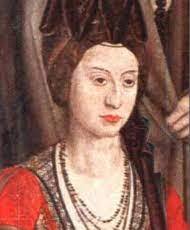
Following the Peace of Pontoise, negotiated in August 1413, the Burgundians lost control of the capital to the Orléanists or Armagnacs, as they came to be called. Realising that their interests would be best served by severing their ties with Burgundy, Louis and Yolande cancelled the marriage agreement and Catherine of Burgundy was ceremonially returned to her parents in November 1413. The insult was public, the break complete, and years would pass before those two princely houses could be reconciled. A month later, on 18 December 1413, the process of realignment was taken further by the betrothal of Marie of Anjou to Charles, Count of Ponthieu, and third surviving son of Charles VI. In the closing months of 1413, therefore, the court of Anjou lost Catherine of Burgundy and gained Charles of France, who came to live in the house of his future bride. That news must have caused John the Fearless more irritation than alarm, for who could have predicted that less than four years later Charles would find himself Dauphin after the death of his two older brothers ?
From early in 1414, then, the queen's "children", to use the term employed in her accounts, were to include Charles, who was brought up from the age of ten under the tutelage of Queen Yolande and her servants, at a court which had small love for Burgundy, and increasingly supported the cause of the Armagnacs. The circumstances in which Charles was brought up were important, as Malcolm Vale has pointed out:
"Between [Charles' betrothal], as a child of ten, in 1413, and his accession, as a youth of nineteen, in 1422, a governing group had formed round Charles. It was to be the source of many of his most able and most trusted servants. With the future wife of the dauphin came her formidable mother and her servants."
Those servants included Alain Chartier, whose appointment as a royal secretary seems to date from the time when an independent household was formed to serve the new dauphin.
Christopher Allmand - War, Government and Power in Late Medieval France
#xv#christopher allmand#war government and power in late medieval france#alain chartier#yolande d'aragon#louis ii d'anjou#jean sans peur#catherine de bourgogne#marie d'anjou#charles vii#armagnacs vs bourguignons#hundred years war
4 notes
·
View notes
Photo

Mary I (1370-1395), Queen of Hungary etc. Lithograph by Josef Kriehuber.
Mary, also known as Maria of Anjou, reigned as Queen of Hungary and Croatia (formally "king") between 1382 and 1385, and from 1386 until her death. She was the daughter of Louis the Great, King of Hungary and Poland, and his wife, Elizabeth of Bosnia.
Having no male siblings, Mary was crowned "king" of Hungary on 17 September 1382, seven days after Louis the Great's death.
Mary's marriage to Sigismund of Luxembourg, a member of the imperial Luxembourg dynasty, was already decided before her first birthday.
#anjou mária#mary of anjou#queen of hungary#josef kriehuber#magyar királyság#magyar királyne#full length portrait#kingdom of hungary#maison d'anjou#casa d'angio#house of anjou#full-length portrait#königreich ungarn#queen mary of hungary#queen mary I#mary of hungary#magyar királynő
16 notes
·
View notes
Photo
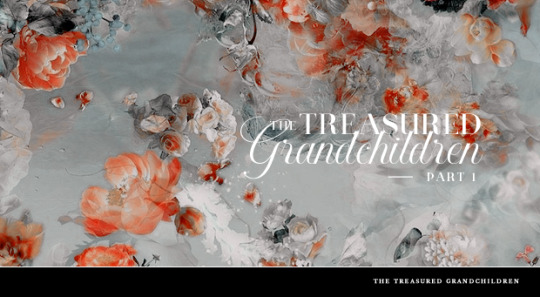


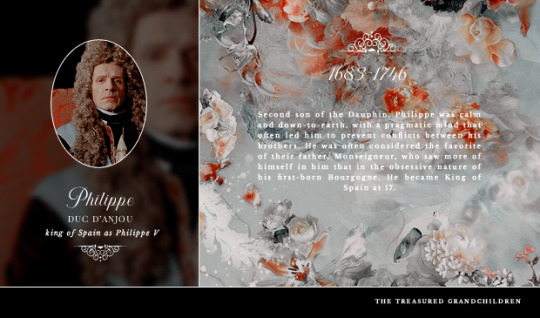

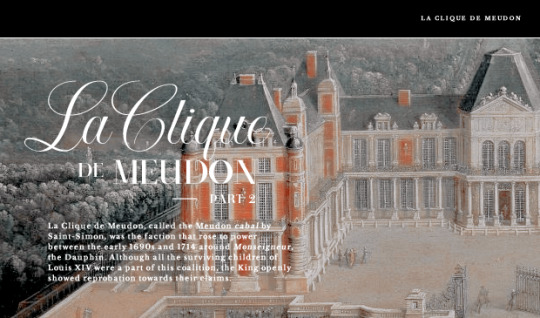


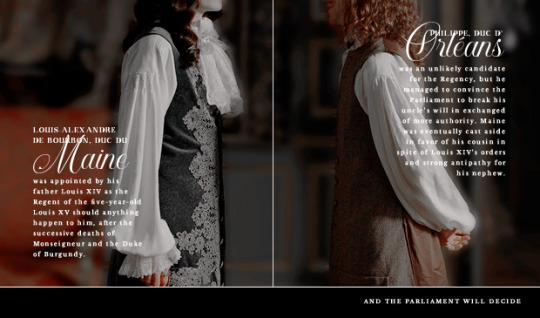

the descendants of Louis XIV
#historyedit#perioddramaedit#mine#louis xiv#louis xv#*#marie-adélaïde de savoie#louis de bourgogne#charles de berry#philippe d'anjou#monseigneur#*graphics
259 notes
·
View notes
Text
Margaret Stewart, "Margaret of Scotland" "Dauphine of France" was born on December 25th 1424 in Perth.
Margaret had married Louis XI son of Charles VII and Maria d'Anjou on 24 June 1436 in Tours Cathedral. As you would expect this marriage had more about the Auld Alliance than any love story,.
Margaret sailed for France in March 1436, and she was escorted by some of the greatest Scottish nobles. She entered Poitiers, where a child dressed as an angel crowned her with a wreath of flowers. She was just a child herself, aged only 11, he husband, Louis in Tours was 13, they wed on 25 June 1436 and she became the Dauphine of France. The marriage of course was not consummated right away and she was taken into the household of the French Queen, Marie of Anjou, where she reportedly saw very little of her husband, whose aversion of her was remarked upon by contemporaries, the French knew her as Marguerite d'Écosse
She is said to have devoted much of her time to writing, and she was criticised by doctors for it, who claimed that her “poetic overwork” may have attributed to her death. Unfortunately, none of her works survive to this day. Reportedly, Louis ordered that all her papers be destroyed.
She was treated with kindness by King Charles VII and his wife, and when she died on 16 August 1445, there was a great outpouring of grief. Her two sisters, Eleanor and Joan, were on their way to France at the invitation of Marie of Anjou, but they arrived just a few days after Margaret’s death.
An unidentified Scot wrote of Margaret,
"Alas that I should have to write what I sadly relate about her death…I wrote write this saw her every day, for the space of nine years, alive and enjoying herself in the company of the King and Queen of France. But then…I saw her, within the space of eight days, first in good health and then dead and disembowelled and laid in a tomb at the corner of the high altar, in the cathedral church of Châlons."
She is buried in Saint-Laon church in the French department of Deux-Sèvres, a canopy over her tomb is all that remains after the destruction during the French Revolution, a modern floor plaque and grill have been added her coffin can be seen though the grill.
There is a lot more history to read about the marriage and her life here from the excellent Freelance History Writer https://thefreelancehistorywriter.com/…/margaret-stewart-o…/

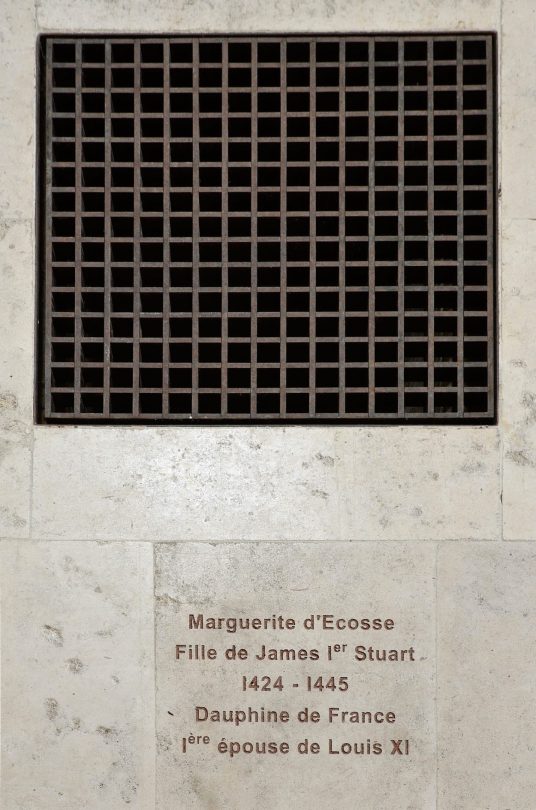
15 notes
·
View notes
Text
Tbh though I’ve got to feel sorry for Charlotte of Savoy as well. I mean she was pretty sidelined by Louis XI too, and he was king then so able to do so more effectively than when he was dauphin and married to Margaret, but she doesn’t have the romantic appeal of her predecessor so she is even more ignored (when you consider that she was actually queen of France that is). Anyway it’s just sad.
#I love Anne de Beaujeu and Yolande of Aragon and all my other strong awesome fifteenth century women#But I have to feel sorry for Charlotte and Margaret and also Marie d'Anjou though at least Charles VII wasn't so spiteful about it#Just callous#Louis XI is a fascinating monarch but try as I might I can never forgive him for destroying Margaret's poems
2 notes
·
View notes
Photo
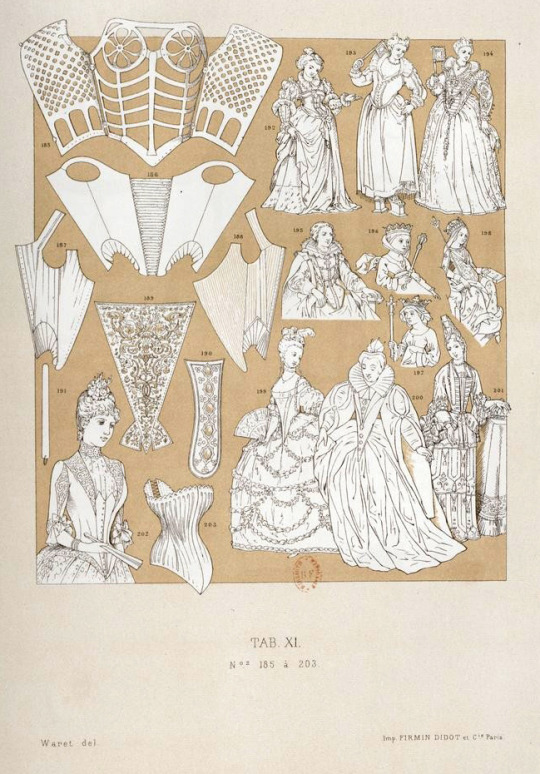
Tab. XI. Nos 185 à 203. Les Corsets.
Le costume historique, by Albert Racinet. Paris, 1888. Bibliothèque nationale de France
Tab. XI. Les Corsets.
185. Italian Busto, iron corset. Framework lined with velvet. Venetian. Photographic document.
186. Duchess corset body, front, with shoulder straps and basques, laced in front. (Encyclopédie; le tailleur de corps.)
187, 188, 191. French corset, open front. Boned with solid bones and transverse dressage bones, shoulder straps and basques. 187: half-whale; 188: solid ribs; 191: whale busk, used in pairs; slipped into the front, on each side, with a loop for removal. (Encyclopédie.)
190. Goldsmith's breastplate adorned with pearls and jewels, early 16th century. Ms. 7232, Bibl. nat.
192. Figure after Jost Amman, wearing a hooked corset, the point of which pointed forwards, 16th century.
193 & 194. Figures after César Vecellio, late 16th century; Venetians mounted on skates (Tab. X: 156, 157, 162, 163). Busto corset, advances while being prolonged, and in such a way as to form the false belly. (See about these ladies pl. 289.)
195. Lady of the Netherlands, after Van Dyck; Medici bodice.
196 & 197. Figures by Michel Wolgemut in the Chronicle of Nuremberg, 1493, showing the use of the corset by the curve of the body.
198. Marie d'Anjou, wife of Charles VII, receiving in 1455 the homage of a book, which is another example, going back earlier, of the obvious use of the corset walking with the arch of the loins. From the Twelve Perilz of Hell, Ms. de la Bibl. of the Arsenal.
199. Lady-in-Waiting to Queen Marie-Antoinette, after Moreau the Younger.
200. Marriage of Joyeuse, Marguerite de Vaudemont, 1581. Louvre.
201. Lady, late 17th century, after Bonnard.
202. Figure from La Mode illustrée, No. 9, 27 February 1887.
203. Cuirass-corset, with steel blades.
Le costume historique. Cinq cents planches, trois cents en couleurs, or et argent, deux cents en camaïeuTypes principaux du vêtement et de la parure rapproches de ceux de l'intérieur de l'habitation dans tous les temps et chez tous les peuples, avec de nombreux détails sur le mobilier, les armes, les objets usuels, les moyens de transport, etc. Recueil publié sous la direction de m. A. Racinet, auteur de l'ornement polychrome, avec des notices explicatives, une introduction générale, des tables et un glossaire. Paris, Librairie de Firmin-Didot et Cie. Imprimeurs de l'Institut, 56, rue jacob, 56. 1888. Droits de traduction et de reproduction réservés. Bibliothèque nationale de France
#Le costume historique#19th century#1800s#1880s#1888#publication#illustration#fashion#Bibliothèque nationale de France#corset#16th century#17th century#15th century#dress#busto#venetian#french#italian#plastron#van dyck#medici#Wolgemut
39 notes
·
View notes